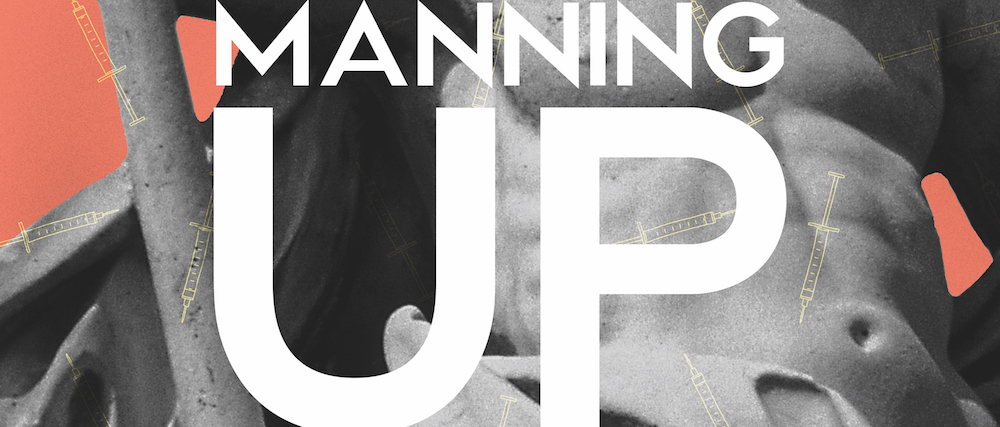
Testosterone Treatments to boost the male hormone and combat middle age.
Middle age is filled with challenges. And for many men, one of them is low levels of testosterone. Here we offer a breakdown of the hormone and a candid look at the latest treatments.
-
CategoryPeople
 In any locker room or sports bar where men over 40 hang out, you’ll likely hear banter about testosterone—guys complaining about low levels, comparing therapy notes and debating, in some cases, controversial treatments.
In any locker room or sports bar where men over 40 hang out, you’ll likely hear banter about testosterone—guys complaining about low levels, comparing therapy notes and debating, in some cases, controversial treatments.
Testosterone is a steroidal hormone, derived from cholesterol. The testes primarily secrete it; yet, women also have testosterone (just as men have estrogen).
Why do we need it? Healthy levels of natural testosterone help a guy feel and look like a guy. The hormone bolsters physical energy, sexual prowess and fertility; it encourages secondary sex traits such as muscle mass, body hair and even bone density. In addition, this key male hormone supports brain function, endurance and a sense of well-being.
Levels fluctuate throughout life. Natural testosterone levels peak for most men in their early 20s. By the time guys reach their late 30s or early 40s, many are in the lower third of normal range or even below. Then in later life, testosterone levels continue down that slippery slope.
“The most profound cause of declining testosterone levels for men is age,” says Gary Bellman, MD, a board-certified urologist and antiaging expert at the Southern California Urology Institute in West Hills. Other factors play a smaller role in the decline of T levels, he adds. These include smoking, ill health, alcohol consumption, narcotic use and obesity, among others. While you can address many of these secondary factors, you can’t reverse the aging process.
Or can you?
Testosterone therapy won’t make you younger, but many experts believe that boost- ing testosterone levels to appropriate, moderate levels may, at the very least, improve the way you feel and look for your age.
Therapy is not without controversy, how- ever, both among those who recommend differing types of testosterone therapy and those who are skeptical about it altogether.
All the Rage
Testosterone therapy has grown in popularity over the years; millions of American men now use prescription testosterone. You’ve likely seen the commercials for these products, targeting the same male demographic as cholesterol-reducing medications and prescriptions that address erectile dysfunction.
Medical testosterone is now available in many different formulations such as topical (transdermal), injectable, implant and oral. Topical forms include patches, creams and alcohol-based gels. Injectable prescription testosterone can be administered through intramuscular or subcutaneous shots, while pellets are implanted. And there are also oral options, although many doctors discourage the use of these because they can stress the liver.
Finally, there are multiple over-the-counter forms of oral supplements that also claim to boost T levels, but Dr. Bellman isn’t a fan. “I’m surprised by the number of well-educated patients I see who buy stu from the liquor store or online rather than going to a medical professional to get the guidance to increase their testosterone levels safely and effectively.”
With so many options, choosing a treatment can be confusing. Further complicating the matter, many men and their partners are concerned about possible side effects—in particular potential behavioral changes—although Dr. Bellman downplays those concerns. “There’s a misconception that medical testosterone therapy will make a man aggressive,” he says. “Properly managed by a doctor, testosterone therapy will make a man more manly, but not more aggressive.” Dr. Bellman emphasizes one caveat—administering testosterone should only be done under an experienced medical practitioner’s care.
The “T” Timeline
Your pituitary gland stimulates your testes to produce testosterone and sperm. After natu- rally-produced testosterone enters your blood, it attaches to androgen receptors. This in turn increases anabolic signaling in muscle tissue, which encourages increased muscle strength, enhanced hand-to-eye coordination, quickness and other performance-related skeletal muscle effects. Higher levels of natural T also increase your metabolism and your body’s ability to use protein more efficiently.
When your body stops producing ideal levels of T, you’ll likely begin to notice it. You’ll start to feel more sluggish. You’ll add body fat and your muscle mass will decrease. Perhaps you’ll feel a little depressed. That’s the time when you might want to consider consulting a doctor.
“The first question I ask a patient once we’ve determined that he has low testosterone is: ‘What is your plan with reproduction?’” Dr. Bellman says. “That’s because all types of testosterone therapy have the potential to reduce fertility.” Once you provide your body with an exogenous (i.e., external) supply of testosterone, your testes don’t need to work as hard. This leads to a further reduction in production of both testosterone and sperm, decreasing your chances of reproducing.
Using prescription testosterone can also reduce the size of testicles by as much as
25%, according to Dr. Bellman. He adds that this effect is typically reversible if you stop testosterone therapy. On the other hand, young bodybuilders who abuse steroids may shrink their testicles far beyond this—to the point where the damage is not reversible.
Diagnosis and Treatments
Shira Miller, MD, Concierge Integrative Medicine Physician in Sherman Oaks, takes
a step-by-step approach. First the internist determines if low T is due to primary or secondary hypogonadism. The primary condition is when the testes cannot produce testosterone due to testicular injury (e.g., cancer, radiation, trauma, infection or aging). Secondary hypogonadism is when the testes can produce testosterone, but other factors cause decreased messaging from the hypothalamus and/or pituitary to the testes, which reduces testosterone output.
When the latter is diagnosed, Dr. Miller’s first recommendation is clomiphene citrate, an oral estrogen-receptor-blocking drug that allows men with declining testosterone levels to optimize T release from their testes. “This oral medication doesn’t shut o the hypothalamic-pituitary-testicular axis and is especially important for men wanting to have children, as it doesn’t cause low sperm count or infertility, which is a guaranteed side effect of testosterone,” Dr. Miller says.
David Kawashiri, MD, at Cedars-Sinai, Beverly Hills, prefers to prescribe topical forms for its more modest boost. “Topical applications provide a steadier level of improved testosterone,” he says. In general, Dr. Kawashiri finds that topical forms are easier for patients to administer because they don’t need to make as many visits to their doctor’s office. “Inject- able forms spike when administered but then lower over time,” Dr. Kawashiri says, leaving patients with diminishing returns between doctor visits.
The bottom line: no form of testosterone therapy is perfect for everyone. Factors such as age, primary objective, level of dedication to treatment and lifestyle all have to be weighed and talked through with a doctor.
Testimonies
“I’ve used topical gel for more than eight years,” says Austin , a 54-year- old man in Woodland Hills. “I’ve noticed many benefits, including an increase in energy and vitality.” In addition, he describes a boost in muscle mass and a decrease in body fat shortly after he first began using the topical. “At first I used the patch, and I didn’t have any prob- lems. But after about three months, I began to develop a rash in the shape of the patch after each application.”
That led him to switch to a gel product.
“I have noticed an increase in body hair and thinning of the hair on my head,” he says. But Austin also says that he can’t necessarily attri- bute that to testosterone therapy as compared to normal aging. Informed about potentially reducing these side e ects by using an inject- able or implant form, he says, “The topical version has been beneficial, but maybe it’s time to have another conversation with my doctor.”
Another testosterone user, Greg in Encino, has been using intramuscular injectable testosterone for three years. His protocol is a weekly injection for three months followed by a 90-day break from treatment.
“I noticed that I had more energy and reduced body fat after I first began,” Greg says. He was fit when he started injection therapy and didn’t notice a weight gain or loss overall due to the fact that muscle replaced body fat. “I still weigh 174 pounds, three years later.”
He notes that one side benefit may be more youthful-appearing skin, a common anecdotal claim among those who use prescription T. “At least that’s what my fiancée tells me,” he says. Finally, Greg says that he does notice a reduction in energy and muscle mass at the end of his 90-day break—a signal that it’s time to restart his weekly injections.
Level Best
Normal total testosterone levels for most men range from about 250 to 1100 ng/dL (nanograms per deciliter) in their blood. This includes both free and bound testosterone. The normal range for free testosterone should fall between 46 and 224 ng/dL.
The Endocrine Society recommends that doctors draw blood samples in the morning
Could using medical testosterone harm my heart?
A study published in the Journal of the American Medical Association (2013) sug- gested that medical testosterone therapy could be harmful to the heart. This drew to determine peak T levels and if testosterone therapy is recommended, Dr. Bellman says. “Men who have a total level below 250 ng/dL at any time of day may have low testosterone,” he adds. It’s particularly important to deter- mine your peak level, and younger men (those 35-40) with low T at other times of day may be within normal ranges in the morning. Older men show less fluctuation throughout the day, Dr. Bellman explains.
The End Game
“Testosterone therapy makes most men with low T levels feel better,” Dr. Bellman points out. The key is to find the form of T therapy that meets all of your physiological and life- style needs.
Dr. Miller adds a note of caution: “Before one begins any testosterone therapy the cause of one’s low T should be determined, so as not to miss a more primary diagnosis and to guide treatment options.” She says that using testosterone therapy without expert consultation and comprehensive blood testing may miss, for example, the diagnosis of a prolactinoma, a common benign brain tumor that can cause lowT.
Our experts are in sync on the broadest point: Medical testosterone therapy may be beneficial for many men, so long as they’ve had an honest conversation with their doctor about their needs and current health status. Only after that should they choose medical testosterone therapy. Regular doctor visits and blood tests, which continue to monitor testosterone levels and other markers of health, are also part of the road map to healthy hormone levels.
Will testosterone therapy make me leaner and more muscular?
When you begin to use medical testosterone, your body will likely grow leaner and more muscular, especially when you follow a weight-training regimen and healthy diet. You’ll almost surely see better results than if you weren’t taking prescription testosterone.
Could using medical testosterone harm my heart?
A study published in the Journal of the American Medical Association (2013) suggested that medical testosterone therapy could be harmful to the heart. This drew a letter of condemnation from the Androgen Study Group, requesting a retraction. “Prior to the 2013 study, there were over a dozen peer-reviewed articles showing testosterone therapy is protective of the heart,” Dr. Bellman says. Today many doctors continue to support the conclusion that testosterone therapy is heart protective rather than harmful.
Will exercising more boost my T levels?
“Largely, it’s a myth that exercise will significantly boost testosterone for those with low levels,” Dr. Bellman says. In fact, it could reduce the hormone as exercise burns or uses testosterone to fuel activity. On the other hand, some experts suggest that exercise may make you more sensitive to the testosterone you do have. Bottom line: Do not reduce exercise expecting to boost T levels.
Does consuming testosterone-boosting foods drive up T-levels?
It’s a nice idea that consuming specific foods will spike testosterone, but Dr. Bellman says this is mostly a fallacy. “Diet is only one small factor in testosterone levels. You can’t reverse time by consuming large amounts of kale and spinach.” Eat these foods for health, but don’t rely on them to boost your low T levels, he recommends.











